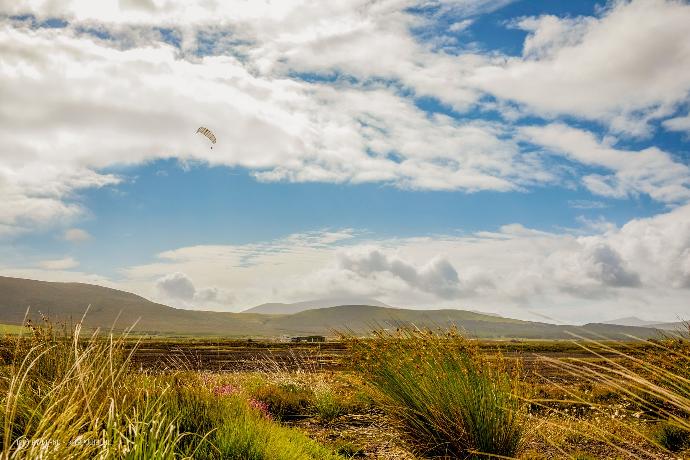How do AWE systems work?
Airborne Wind Energy is about to become a game-changing solution which allows accessing the large untapped wind resources at high-altitudes, above 300 meters, where the winds are not only stronger but also more constant, ensuring a smoother production of electricity. The most common technology of AWE is composed of a kite, tethered to a fixed onshore ground station.
Electricity production occurs in cycles, with each cycle comprising two phases. The first phase, called "reel-out," lasts about 80 seconds. During this phase, the kite ascends, drawing figure-eight to maximize energy capture. Then, during the "reel-in" phase, which lasts approximately 20 seconds, the kite is reeled back in by the ground station, which consumes about 20% of the energy harvested in the first phase. This cycle repeats continuously.
The flight path of the device (and hence force on the tether) is controlled, taking advantage of crosswind motion to increase the energy produced in the traction phase and minimise the energy consumed in the recovery phase.
Devices tend to follow either a helical or a translating figure of eight pattern. There may be more than one airborne element per ground-station (or foundation), with shared use of some components, enabling more continuous generation.
In the DEM-AWE project, the AWE technology developer Kitepower has developed a ground-generator pumping solutions. The main technological goal of the project is to reach a nominal power output of 30 kW and make the system fully autonomous and flying for 10 hours without any human intervention.
Kitepower flying over Bangor Erris, Ireland 👇

Other technology designs are being developed, such as flying-generator (the power conversion is embedded in the flying device and transmitted through the tether) and ground-generator rotary (multiple air foils kept in the wind through a lifter kite, in modular rotors). Find out more here about the other systems.
AWE technologies offer significant material savings: the kite and the tether weigh only a few hundred kilograms, while the ground station weighs about ten tons. This lightness makes AWE highly mobile and easy to deploy. Discover more about AWE advantages and benefits.
